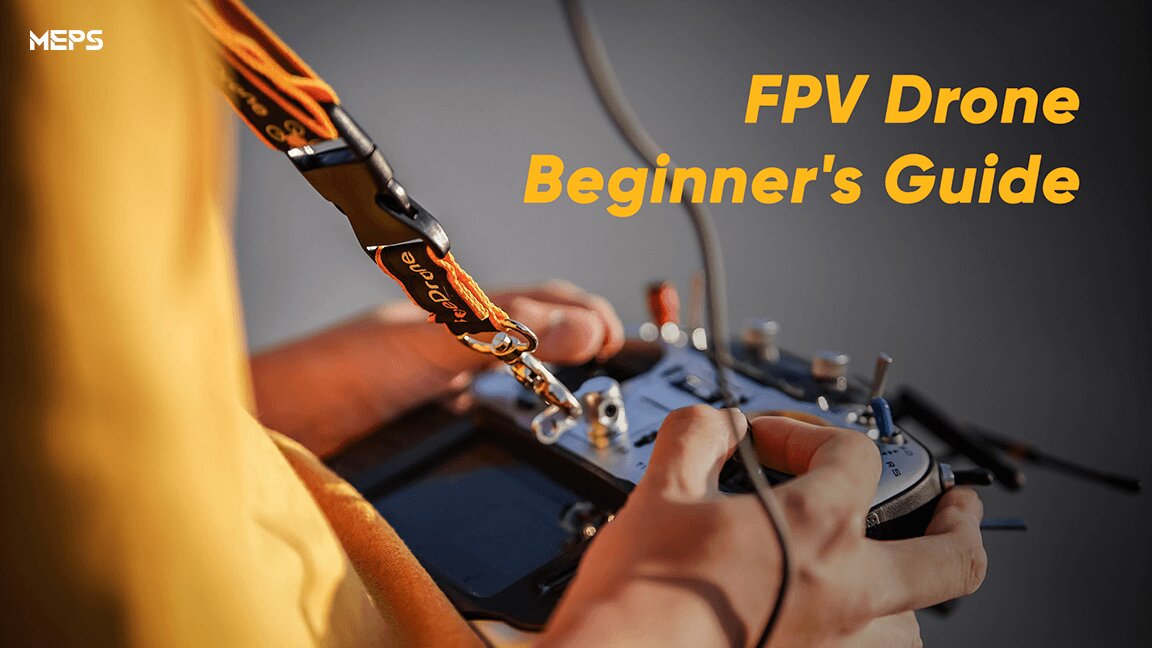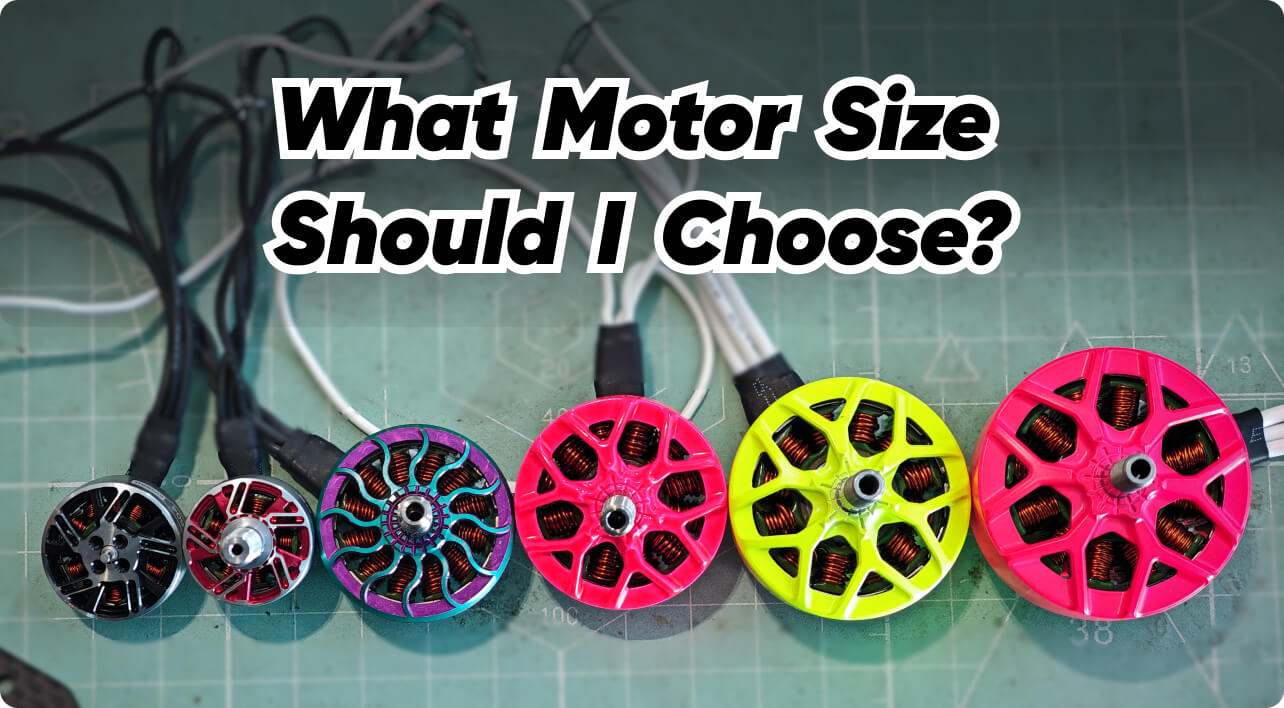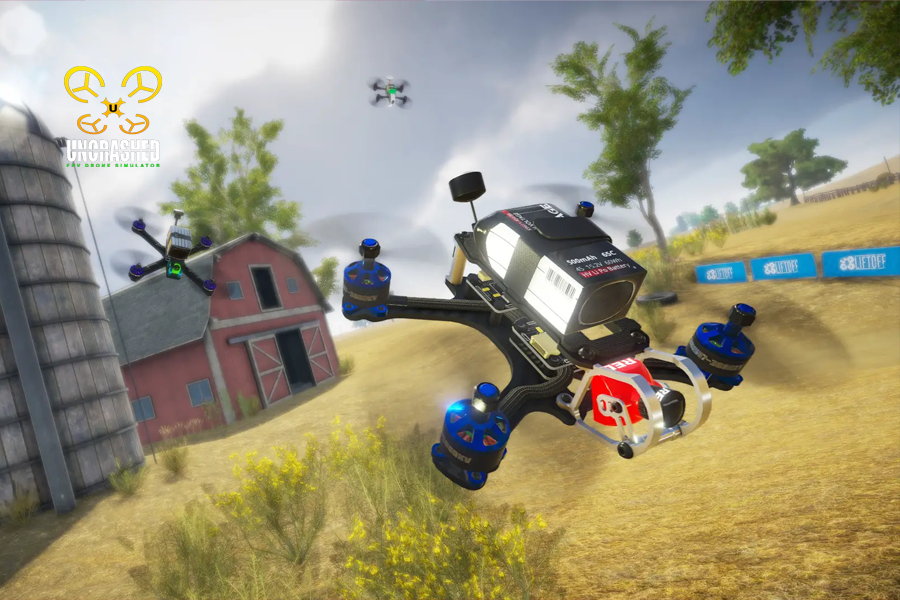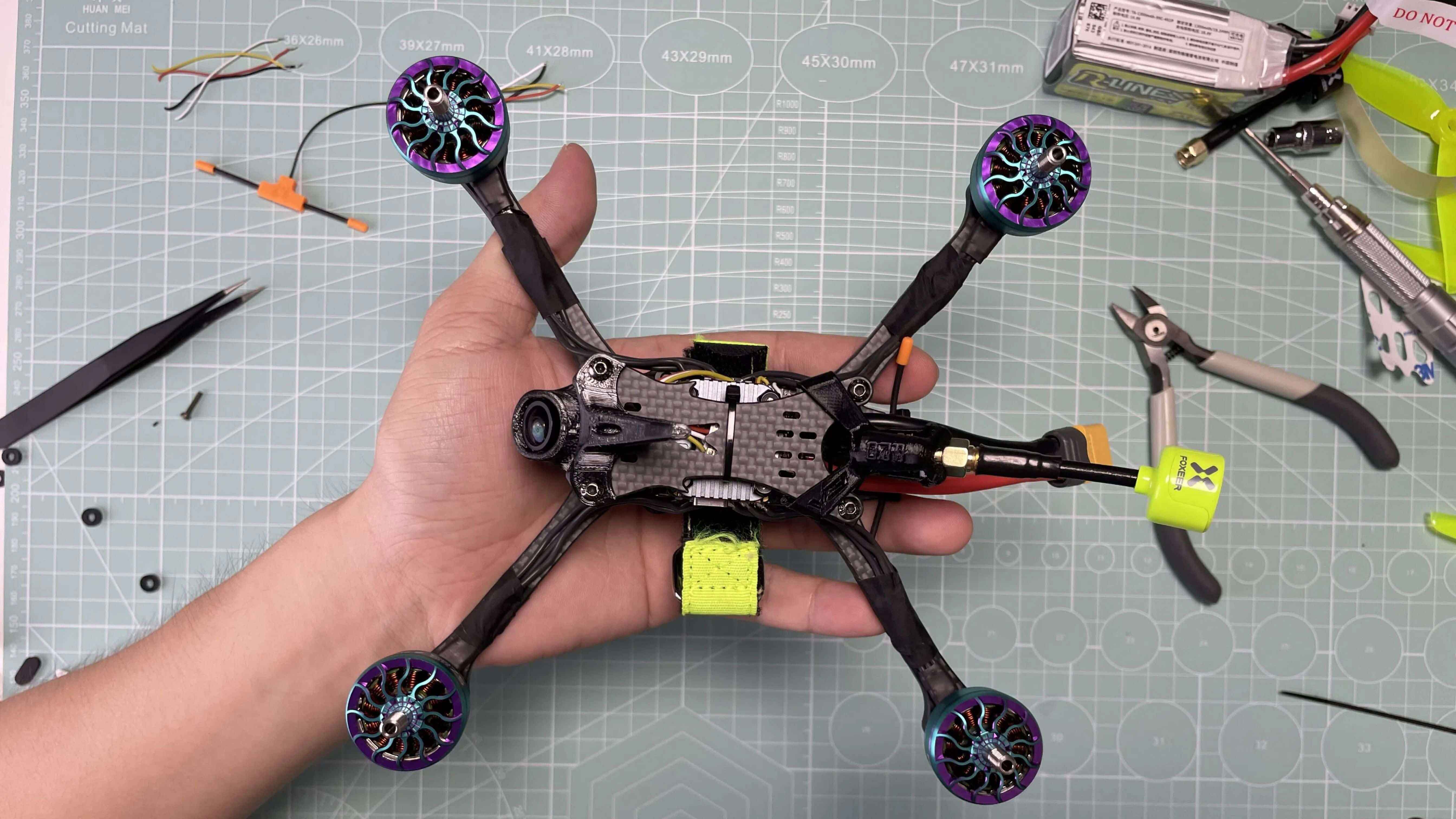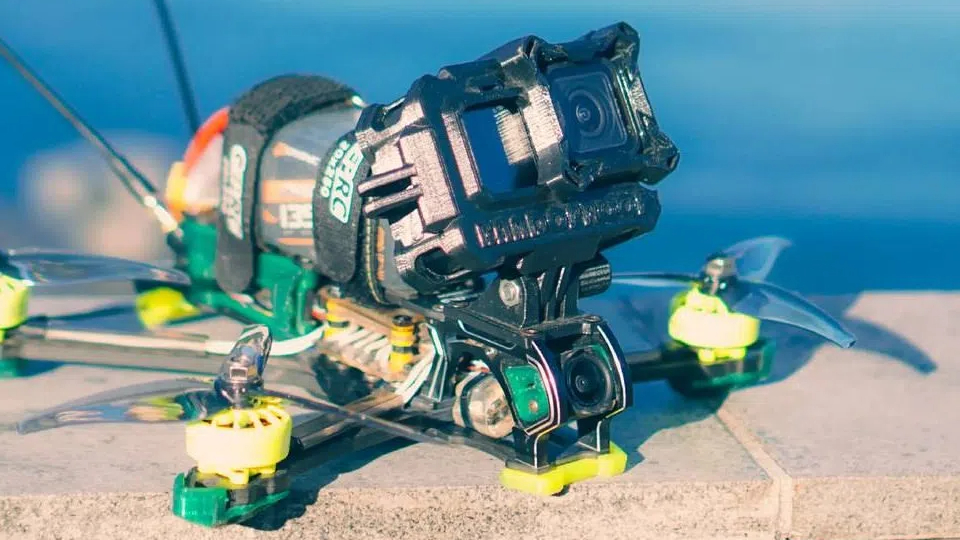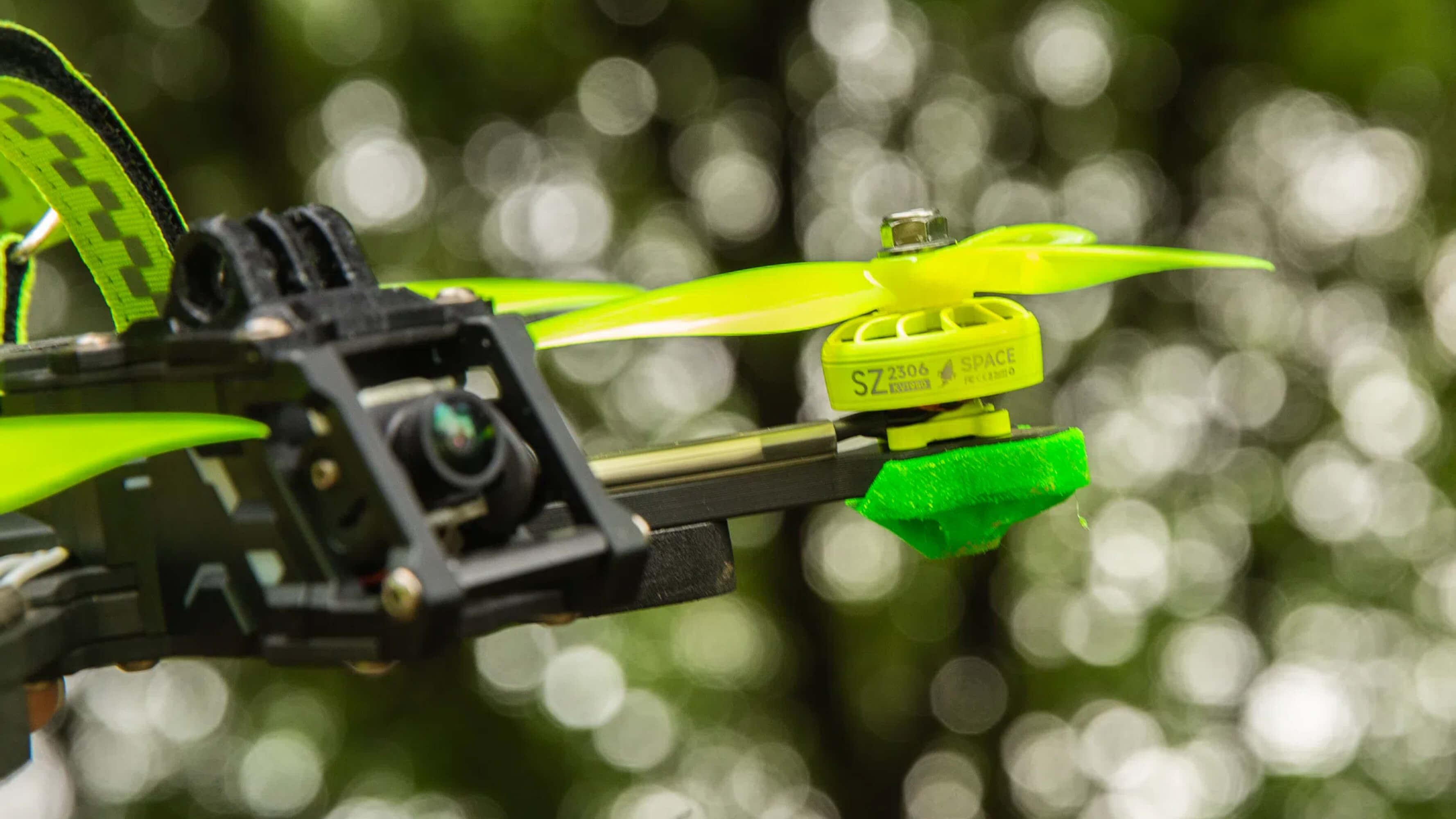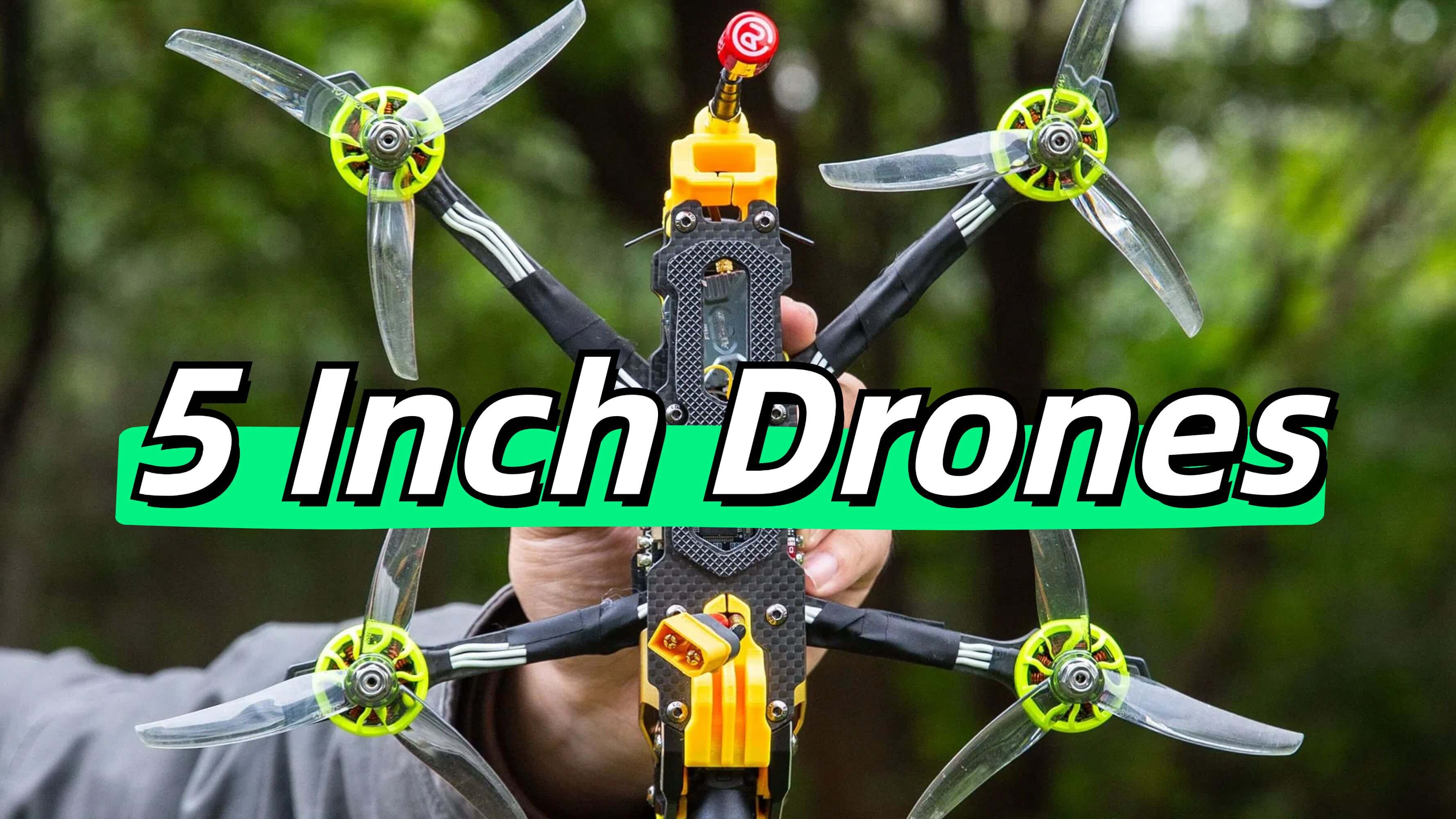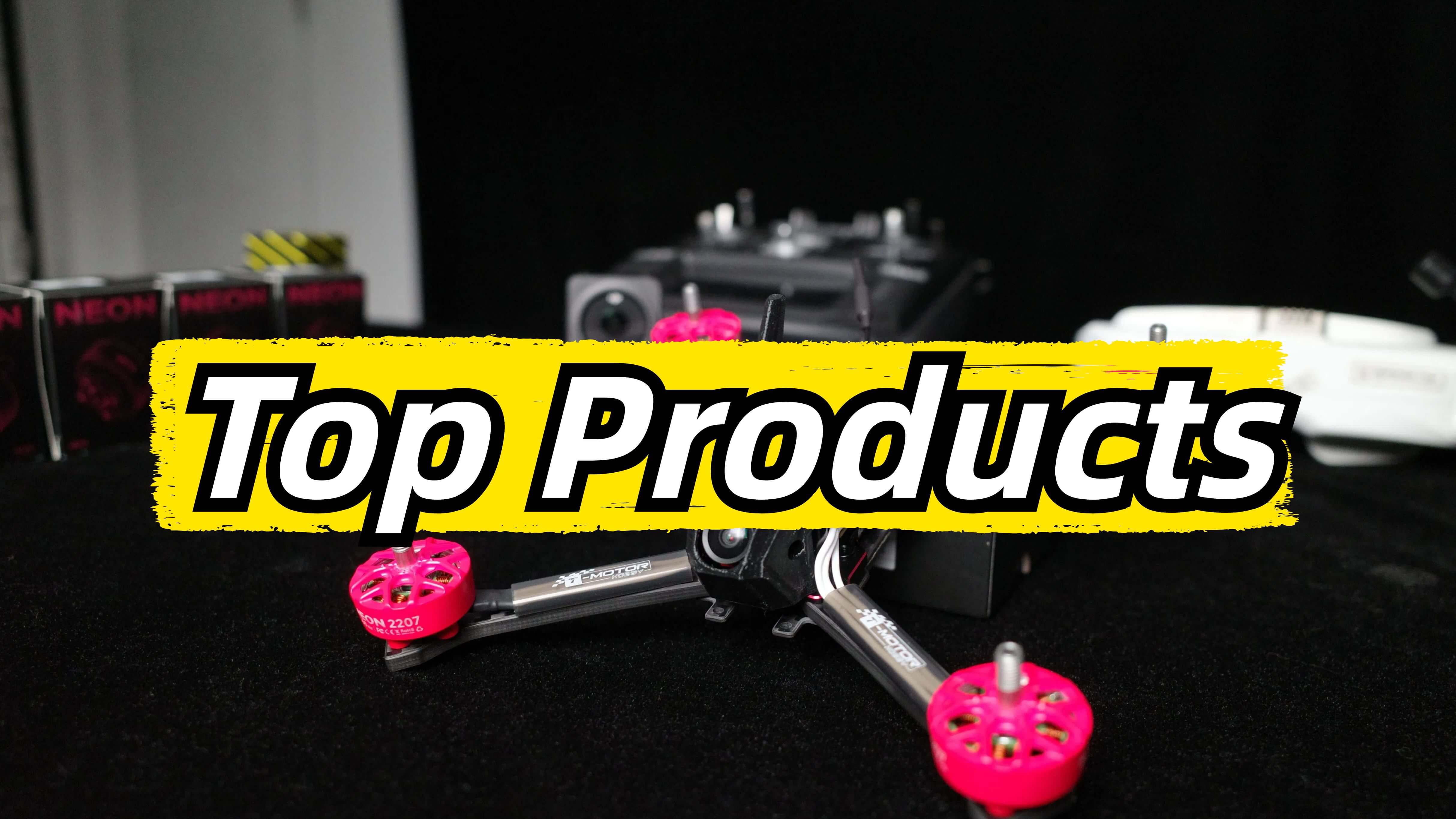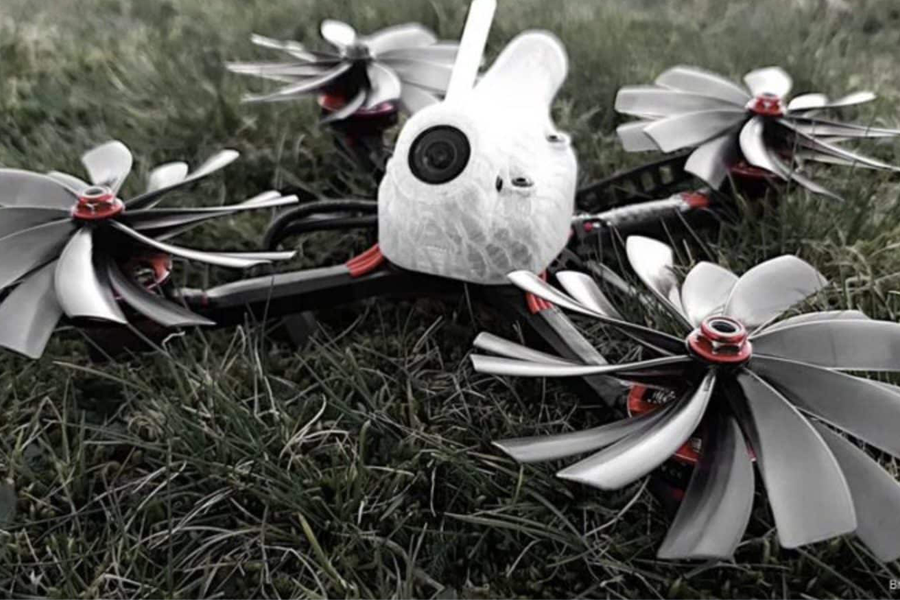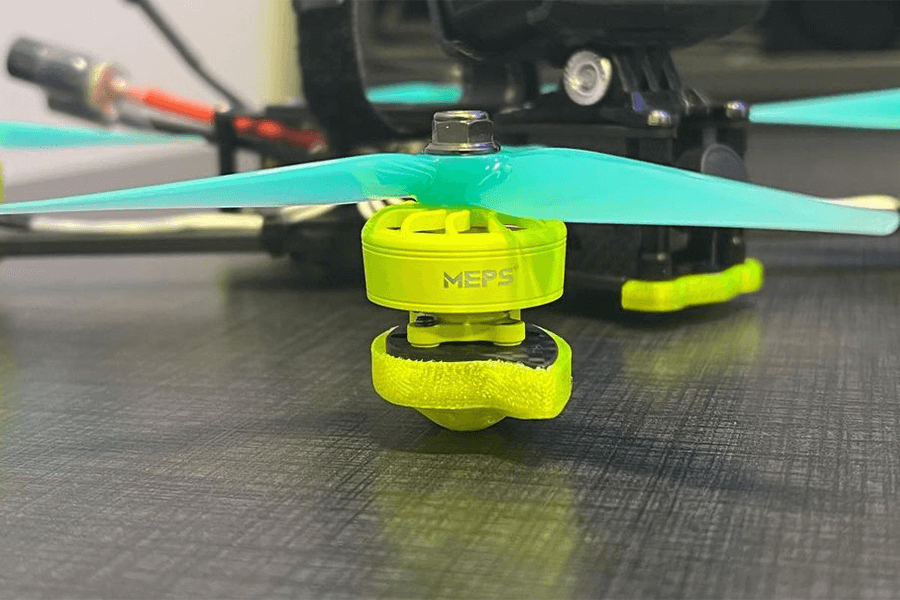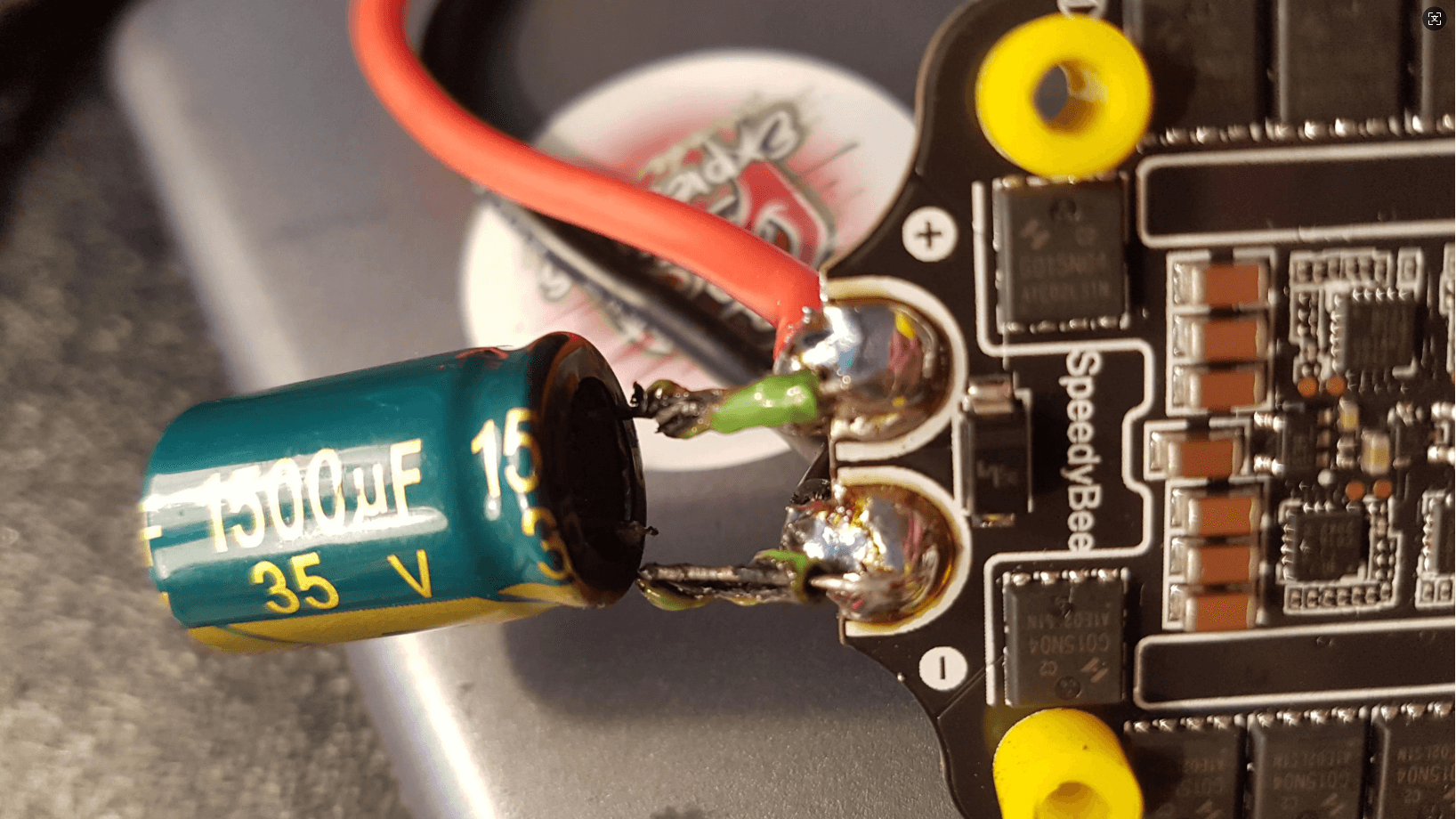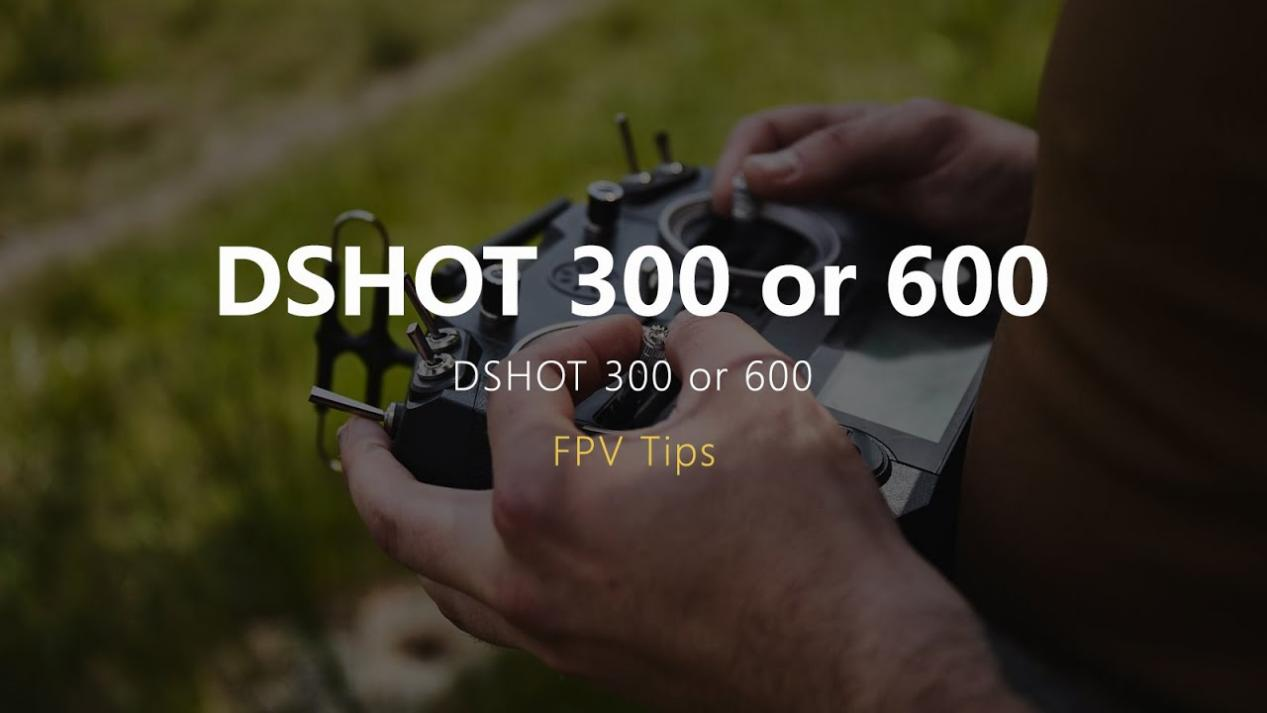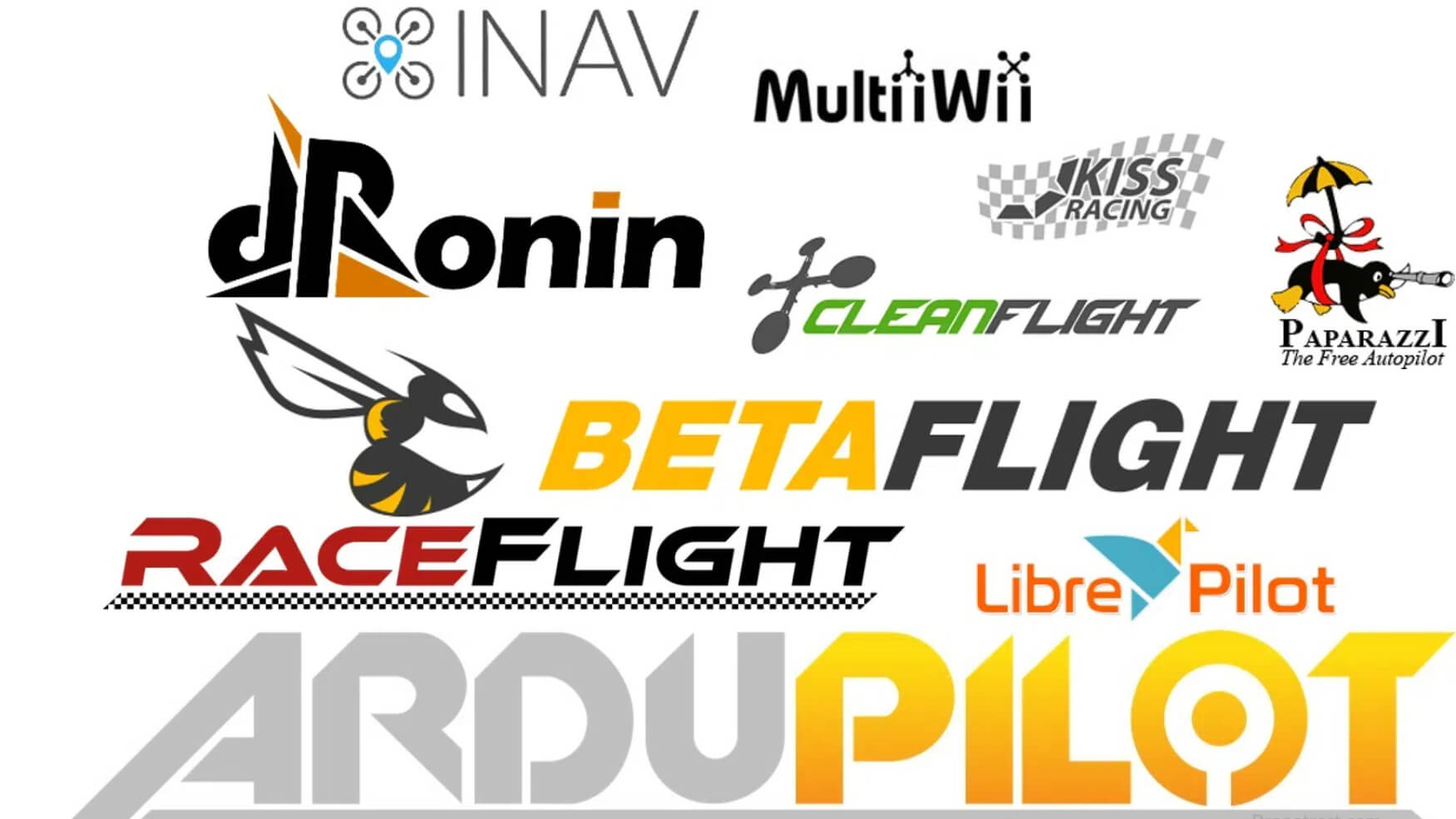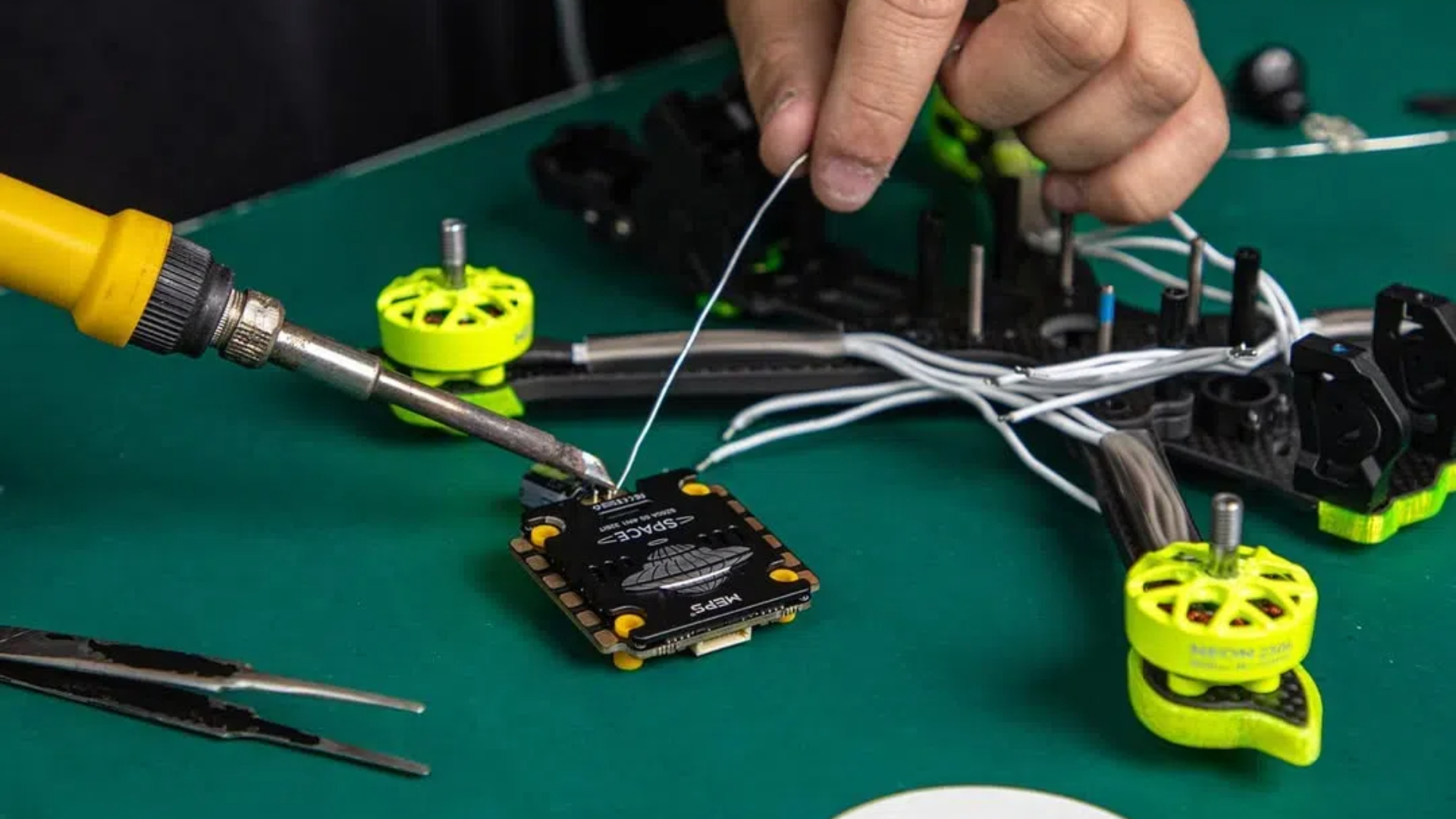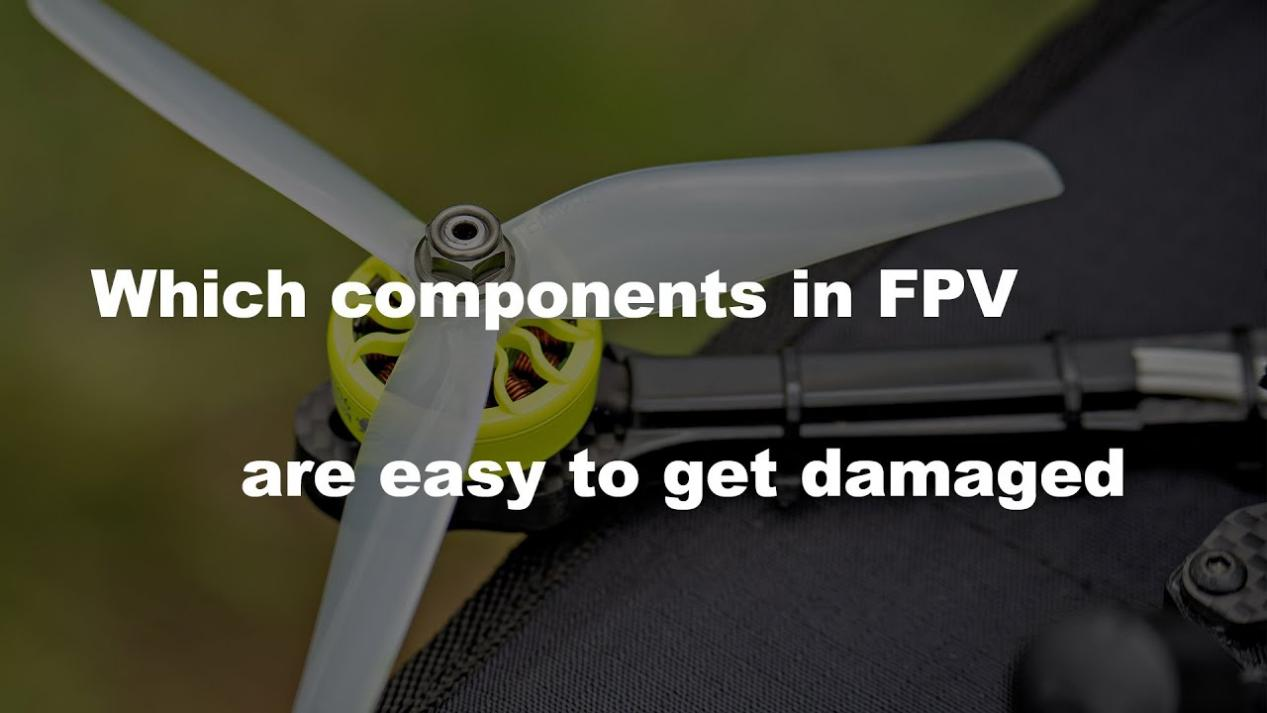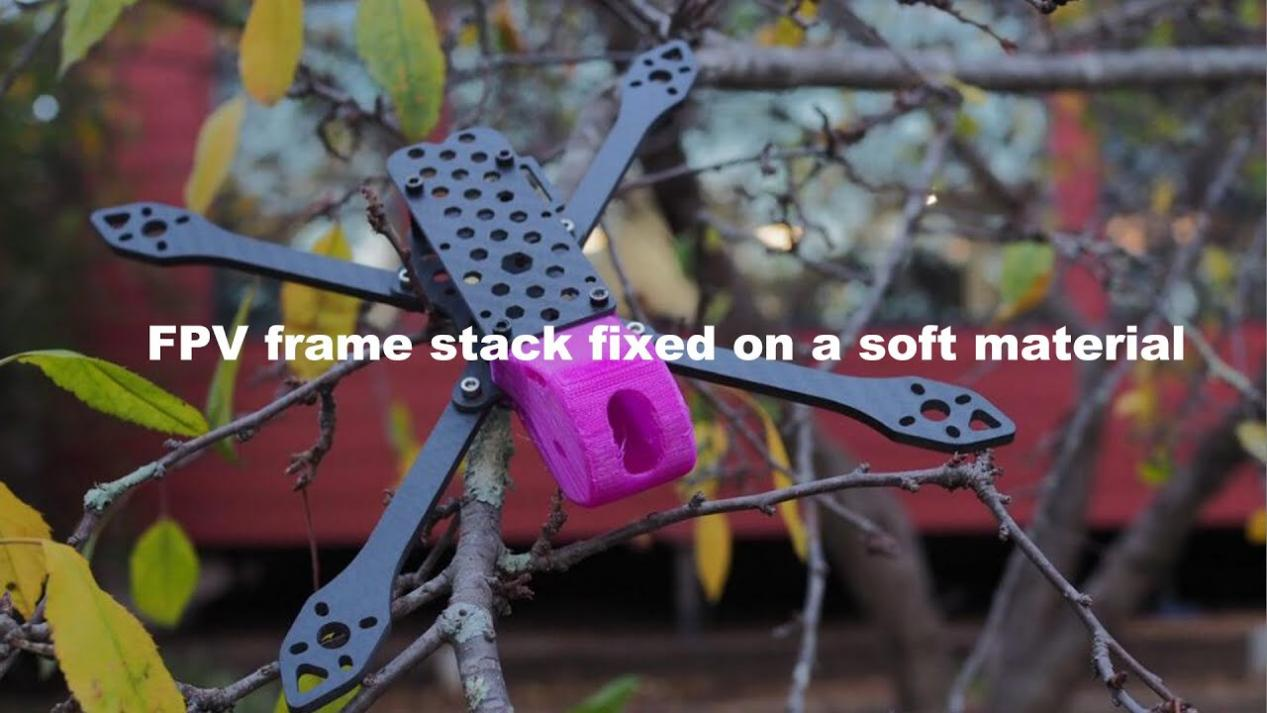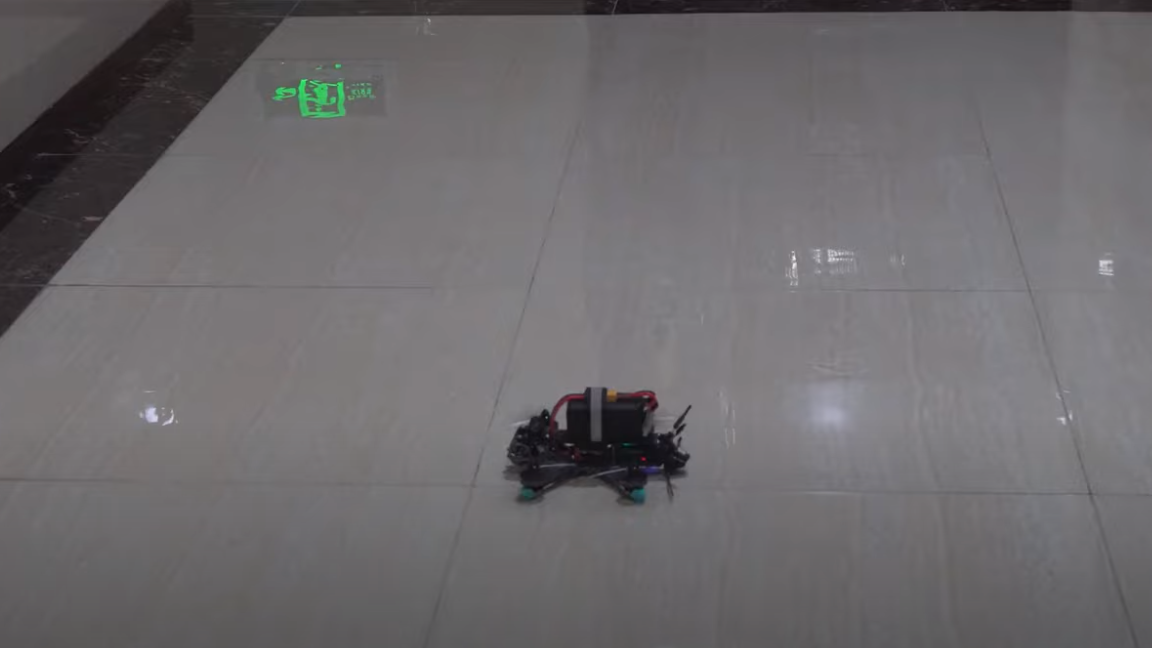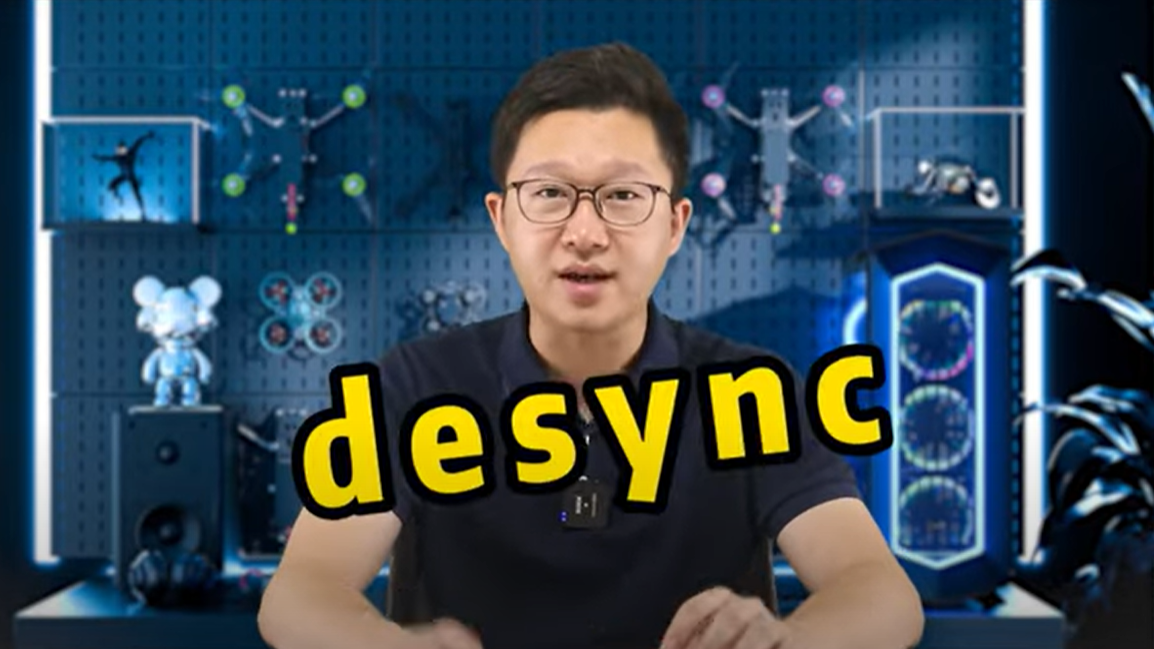Beginner’s Guide
-
Budget-friendly FPV Drone Build: 5 Inch Racing Drone under $300
The 5-inch racing drone is one of the most popular setups in the FPV community—offering excellent speed, agility, and upgrade potential. But is it possible to build a reliable 5 inch racing drone for under $300? Absolutely. In this guide, we’ll walk through a budget-friendly racing drone build, breaking down each component, why it matters, and how it fits into a cost-conscious setup. Ideal for beginners or intermediate pilots looking to FPV racing or practice freestyle. Complete Build List: Best 5-Inch Racing Drone Build Under $300 Here's a breakdown of each component, why it was chosen, and how it fits into your budget: ComponentProductPrice (USD)FrameGEPRC GEP Racer Frame$49.99FC & ESC StackSpeedyBee F405 V4 + 60A 30x30 Stack$79.99MotorsMEPS NEON 2207 2050KV (Set of 4)$40.00FPV CameraCaddx Ant 1200TVL Nano$16.19Video Transmitter (VTX)HGLRC Zeus Nano 350mW$35.09ReceiverBETAFPV ExpressLRS Nano 2.4G$8.99PropellersMEPS SZ4942 (4 Sets)$1.61FPV AntennaFoxeer Lollipop 4 5.8G$11.69Total $243.55 This leaves you some headroom (~$56.45) for essential accessories like LiPo batteries, chargers. Reputable components of FPV racing drone under $300 budget Frame: GEPRC GEP Racer Frame ($49.99) A lightweight, sturdy carbon fiber frame tailored for racing. It supports standard 30x30 mounting for your flight stack and has ideal geometry for quick cornering and tight gaps. Pros: Durable arms, aerodynamic design, crash-resilient…- 0
- 0
- 28
-
How to Build a 5-Inch FPV Racing Drone (DIY Guide for 2025)
Want to get into the adrenaline-pumping world of FPV drone racing? Building your own 5-inch FPV racing drone is not just rewarding—it’s the best way to learn about your gear, fine-tune performance, and fix issues in the field like a pro. In this step-by-step tutorial, we’ll show you exactly how to build your own FPV racing drone using a DIY FPV racing drone kit. This guide is optimized for beginners and experienced pilots alike and includes expert insights on choosing FPV racing drone parts, assembly, and tuning. Whether you’re into DIY racing drone projects or want to compete on the race track, this is the guide for you. Who Is This Guide For? - Beginners wanting to build their first FPV racing drone - DIY tinkerers looking for a satisfying personal project - FPV racers who want a lightweight, high-speed drone optimized for racing Why Build a FPV Racing Drone Instead of Buying One? DIY FPV racing drone kits not only save money but help you truly understand your aircraft. You’ll know exactly how to troubleshoot, upgrade, or repair it. Most importantly, building a racing drone from scratch gives you a serious edge in performance tuning, weight reduction, and custom configuration. This video…- 0
- 0
- 71
-
How to Build a 5 Inch Freestyle Drone under $200? (2025 Budget Build Guide)
Looking for an affordable 5-inch freestyle drone setup in 2025? Here is a complete FPV drone build guide under $200, including frame, stack, motors, and more—perfect for beginners and budget-conscious pilots. Under $200 Budget FPV Freestyle Drone parts Frame:MAK4 5-inch Freestyle Drone Frame $33.99 FC and ESC Stack:Speedybee F405 V4 & 55A ESC $69.99 Motors:4x MEPS Neon 2207 $59.60 VTX:Eachine TX805 $13.00 FPV Camera:Foxeer Razer Micro $17.99 Receiver:Bayck ELRS RX $9.60 Propellers:MEPS SZ5145 $2.00 ComponentDescriptionPrice (USD)FrameMAK4 5-inch Freestyle Drone Frame$33.99FC + ESCSpeedybee F405 V4 & 55A ESC$69.99Motors4x MEPS Neon 2207$59.60VTXEachine TX805$13.00CameraFoxeer Razer Micro$17.99ReceiverBayck ELRS RX$9.60PropellersMEPS SZ5145$2.00Total$193.42 If you want more different budget of FPV drone, you can come to read this article: Choosing the Right FPV Drone for Different Budget: From Beginner to Pro Performance and Suitability of Each Component Frame: MAK4 5-inch Freestyle Drone Frame(US$33.99) Analysis: The MAK4 5-inch Freestyle Drone Frame is a popular 5-inch frame in the FPV community, known for its simplicity, durability, and cost-effectiveness. It’s a great choice for building a reliable drone, whether you’re racing or flying for fun. Advantages: Lightweight, durable, and easy to repair. A great choice for pilots looking for a solid frame that can withstand crashes without costing too much.…- 0
- 0
- 46
-
Best 5-Inch FPV Drone Kit in 2025: Racing & Freestyle Recommendations
When it comes to FPV drone flying, the 5-inch category strikes the perfect balance between performance, agility, and versatility. Whether you're racing through gates, flipping through freestyle tricks, or capturing cinematic shots, the 5-inch FPV drone kit offers a strong foundation. In this guide, we’ll show you how to choose the best 5-inch FPV drone kit for racing and freestyle flying, along with some top kit recommendations. How to Choose the Best 5-Inch Racing FPV Drone Kit For competitive FPV racing, every gram and every millisecond counts. The ideal racing drone kit should be lightweight, fast, and extremely responsive. Frame Type & Weight Lightweight frames (under 100g), like the Five33 LightSwitch Ultra, enhance agility. Carbon fiber offers strength, with 6mm arms providing more durability at a slight weight cost. Flight Controller (FC) F7 FCs deliver faster processing, essential for high-speed racing, with features like blackbox and barometer for cleaner builds. Electronic Speed Controller (ESC) Choose 20x20 or 30x30 ESCs, with higher ratings (45A–65A) for aggressive flying. Reliable brands include MEPS and Axisflying. Motors Ideal size: 2207 or 2306, with KV range of 1900–2100 for 6S batteries. Balance torque, response, and durability. Video Transmission (VTX) Opt for analog for low latency…- 0
- 0
- 84
-
FPV Freestyle Tricks Tutorial
FPV freestyle flying is an exciting and creative form of drone piloting, where the focus is on performing stunning aerial tricks and stunts with fluid motion and full control. Unlike FPV racing or cinematic FPV, freestyle allows pilots to express themselves through maneuvers like power loops, barrel rolls, and advanced tricks such as Madd flips and juicy flicks. This guide will cover the essential beginner tricks, including yaw spins and front/back flips, and help you progress to more complex maneuvers. Additionally, we’ll explore how to build smooth combos, manage throttle effectively, and avoid common mistakes to ensure a safe and exciting flight experience. What Is FPV Freestyle Flying? FPV (First Person View) freestyle flying is a thrilling branch of drone piloting where the focus is on performing tricks, stunts, and expressive flight movements. Unlike racing, which is based on speed and precision, or cinematic FPV which aims for smooth shots, freestyle is all about creativity, fluid motion, and mastering full control of your drone in three-dimensional space. Freestyle flying typically uses 5-inch quadcopters due to their balance of power, agility, and stability. These drones are often custom-built with durable frames, high-thrust motors, and responsive flight controllers. Freestyle also requires a…- 0
- 0
- 35
-
How Long Do FPV Drone Batteries Last?
Whether you're a beginner or an experienced pilot, understanding FPV drone battery life is essential for safe, efficient, and enjoyable flights. In this guide, we'll explore how long FPV batteries last, how to extend their lifespan, and answer commonly asked questions about FPV battery care and usage. The Importance of Battery Life in FPV Drone Flying. Battery life plays a critical role in FPV drone performance. A reliable FPV battery determines how far, how fast, and how long you can fly. Especially in racing, freestyle, or cinematic flying, pushing the limits of your drone's battery life can make the difference between smooth footage and emergency landings. Understanding battery behavior helps pilots make informed decisions that affect flight safety, equipment longevity, and overall experience. What Is an FPV Drone Battery? A rechargeable power source made especially for FPV drones is called an FPV battery. Usually composed of lithium polymer (LiPo) cells, these batteries are perfect for drones due to their high energy density and lightweight design. Because FPV batteries are available in a variety of configurations, such as varying voltages, capacities, and discharge rates, users can select the battery that best fits the requirements and flying requirements of their drone. These…- 0
- 0
- 43
Recent posts
- Budget-friendly FPV Drone Build: 5 Inch Racing Drone under $300 22/05/2025
- How to Build a 5-Inch FPV Racing Drone (DIY Guide for 2025) 20/05/2025
- How to Build a 5 Inch Freestyle Drone under $200? (2025 Budget Build Guide) 13/05/2025
- Best 5-Inch FPV Drone Kit in 2025: Racing & Freestyle Recommendations 09/05/2025
- FPV Freestyle Tricks Tutorial 07/05/2025
- How Long Do FPV Drone Batteries Last? 05/05/2025
- Choosing the Right FPV Drone for Different Budget: From Beginner to Pro 25/04/2025
Builds
-
Budget-friendly FPV Drone Build: 5 Inch Racing Drone under $300
The 5-inch racing drone is one of the most popular setups in the FPV community—offering excellent speed, agility, and upgrade potential. But is it possible to build a reliable 5 inch racing drone for under $300? Absolutely. In this guide, we’ll walk through a budget-friendly racing drone build, breaking down each component, why it matters, and how it fits into a cost-conscious setup. Ideal for beginners or intermediate pilots looking to FPV racing or practice freestyle. Complete Build List: Best 5-Inch Racing Drone Build Under $300 Here's a breakdown of each component, why it was chosen, and how it fits into your budget: ComponentProductPrice (USD)FrameGEPRC GEP Racer Frame$49.99FC & ESC StackSpeedyBee F405 V4 + 60A 30x30 Stack$79.99MotorsMEPS NEON 2207 2050KV (Set of 4)$40.00FPV CameraCaddx Ant 1200TVL Nano$16.19Video Transmitter (VTX)HGLRC Zeus Nano 350mW$35.09ReceiverBETAFPV ExpressLRS Nano 2.4G$8.99PropellersMEPS SZ4942 (4 Sets)$1.61FPV AntennaFoxeer Lollipop 4 5.8G$11.69Total $243.55 This leaves you some headroom (~$56.45) for essential accessories like LiPo batteries, chargers. Reputable components of FPV racing drone under $300 budget Frame: GEPRC GEP Racer Frame ($49.99) A lightweight, sturdy carbon fiber frame tailored for racing. It supports standard 30x30 mounting for your flight stack and has ideal geometry for quick cornering and tight gaps. Pros: Durable arms, aerodynamic design, crash-resilient…...- 0
- 0
- 28
-
How to Build a 5-Inch FPV Racing Drone (DIY Guide for 2025)
Want to get into the adrenaline-pumping world of FPV drone racing? Building your own 5-inch FPV racing drone is not just rewarding—it’s the best way to learn about your gear, fine-tune performance, and fix issues in the field like a pro. In this step-by-step tutorial, we’ll show you exactly how to build your own FPV racing drone using a DIY FPV racing drone kit. This guide is optimized for beginners and experienced pilots alike and includes expert insights on choosing FPV racing drone parts, assembly, and tuning. Whether you’re into DIY racing drone projects or want to compete on the race track, this is the guide for you. Who Is This Guide For? - Beginners wanting to build their first FPV racing drone - DIY tinkerers looking for a satisfying personal project - FPV racers who want a lightweight, high-speed drone optimized for racing Why Build a FPV Racing Drone Instead of Buying One? DIY FPV racing drone kits not only save money but help you truly understand your aircraft. You’ll know exactly how to troubleshoot, upgrade, or repair it. Most importantly, building a racing drone from scratch gives you a serious edge in performance tuning, weight reduction, and custom configuration. This video…...- 0
- 0
- 71
-
Best 5-Inch FPV Drone Kit in 2025: Racing & Freestyle Recommendations
When it comes to FPV drone flying, the 5-inch category strikes the perfect balance between performance, agility, and versatility. Whether you're racing through gates, flipping through freestyle tricks, or capturing cinematic shots, the 5-inch FPV drone kit offers a strong foundation. In this guide, we’ll show you how to choose the best 5-inch FPV drone kit for racing and freestyle flying, along with some top kit recommendations. How to Choose the Best 5-Inch Racing FPV Drone Kit For competitive FPV racing, every gram and every millisecond counts. The ideal racing drone kit should be lightweight, fast, and extremely responsive. Frame Type & Weight Lightweight frames (under 100g), like the Five33 LightSwitch Ultra, enhance agility. Carbon fiber offers strength, with 6mm arms providing more durability at a slight weight cost. Flight Controller (FC) F7 FCs deliver faster processing, essential for high-speed racing, with features like blackbox and barometer for cleaner builds. Electronic Speed Controller (ESC) Choose 20x20 or 30x30 ESCs, with higher ratings (45A–65A) for aggressive flying. Reliable brands include MEPS and Axisflying. Motors Ideal size: 2207 or 2306, with KV range of 1900–2100 for 6S batteries. Balance torque, response, and durability. Video Transmission (VTX) Opt for analog for low latency…...- 0
- 0
- 84
Parts
-
Budget-friendly FPV Drone Build: 5 Inch Racing Drone under $300
The 5-inch racing drone is one of the most popular setups in the FPV community—offering excellent speed, agility, and upgrade potential. But is it possible to build a reliable 5 inch racing drone for under $300? Absolutely. In this guide, we’ll walk through a budget-friendly racing drone build, breaking down each component, why it matters, and how it fits into a cost-conscious setup. Ideal for beginners or intermediate pilots looking to FPV racing or practice freestyle. Complete Build List: Best 5-Inch Racing Drone Build Under $300 Here's a breakdown of each component, why it was chosen, and how it fits into your budget: ComponentProductPrice (USD)FrameGEPRC GEP Racer Frame$49.99FC & ESC StackSpeedyBee F405 V4 + 60A 30x30 Stack$79.99MotorsMEPS NEON 2207 2050KV (Set of 4)$40.00FPV CameraCaddx Ant 1200TVL Nano$16.19Video Transmitter (VTX)HGLRC Zeus Nano 350mW$35.09ReceiverBETAFPV ExpressLRS Nano 2.4G$8.99PropellersMEPS SZ4942 (4 Sets)$1.61FPV AntennaFoxeer Lollipop 4 5.8G$11.69Total $243.55 This leaves you some headroom (~$56.45) for essential accessories like LiPo batteries, chargers. Reputable components of FPV racing drone under $300 budget Frame: GEPRC GEP Racer Frame ($49.99) A lightweight, sturdy carbon fiber frame tailored for racing. It supports standard 30x30 mounting for your flight stack and has ideal geometry for quick cornering and tight gaps. Pros: Durable arms, aerodynamic design, crash-resilient…- 0
- 0
- 28
-
How to Build a 5 Inch Freestyle Drone under $200? (2025 Budget Build Guide)
Looking for an affordable 5-inch freestyle drone setup in 2025? Here is a complete FPV drone build guide under $200, including frame, stack, motors, and more—perfect for beginners and budget-conscious pilots. Under $200 Budget FPV Freestyle Drone parts Frame:MAK4 5-inch Freestyle Drone Frame $33.99 FC and ESC Stack:Speedybee F405 V4 & 55A ESC $69.99 Motors:4x MEPS Neon 2207 $59.60 VTX:Eachine TX805 $13.00 FPV Camera:Foxeer Razer Micro $17.99 Receiver:Bayck ELRS RX $9.60 Propellers:MEPS SZ5145 $2.00 ComponentDescriptionPrice (USD)FrameMAK4 5-inch Freestyle Drone Frame$33.99FC + ESCSpeedybee F405 V4 & 55A ESC$69.99Motors4x MEPS Neon 2207$59.60VTXEachine TX805$13.00CameraFoxeer Razer Micro$17.99ReceiverBayck ELRS RX$9.60PropellersMEPS SZ5145$2.00Total$193.42 If you want more different budget of FPV drone, you can come to read this article: Choosing the Right FPV Drone for Different Budget: From Beginner to Pro Performance and Suitability of Each Component Frame: MAK4 5-inch Freestyle Drone Frame(US$33.99) Analysis: The MAK4 5-inch Freestyle Drone Frame is a popular 5-inch frame in the FPV community, known for its simplicity, durability, and cost-effectiveness. It’s a great choice for building a reliable drone, whether you’re racing or flying for fun. Advantages: Lightweight, durable, and easy to repair. A great choice for pilots looking for a solid frame that can withstand crashes without costing too much.…- 0
- 0
- 46
-
How Long Do FPV Drone Batteries Last?
Whether you're a beginner or an experienced pilot, understanding FPV drone battery life is essential for safe, efficient, and enjoyable flights. In this guide, we'll explore how long FPV batteries last, how to extend their lifespan, and answer commonly asked questions about FPV battery care and usage. The Importance of Battery Life in FPV Drone Flying. Battery life plays a critical role in FPV drone performance. A reliable FPV battery determines how far, how fast, and how long you can fly. Especially in racing, freestyle, or cinematic flying, pushing the limits of your drone's battery life can make the difference between smooth footage and emergency landings. Understanding battery behavior helps pilots make informed decisions that affect flight safety, equipment longevity, and overall experience. What Is an FPV Drone Battery? A rechargeable power source made especially for FPV drones is called an FPV battery. Usually composed of lithium polymer (LiPo) cells, these batteries are perfect for drones due to their high energy density and lightweight design. Because FPV batteries are available in a variety of configurations, such as varying voltages, capacities, and discharge rates, users can select the battery that best fits the requirements and flying requirements of their drone. These…- 0
- 0
- 43
-
Tutorial Propellers: Choose Best Suitable Propellers for Your FPV
The Ultimate Guide to FPV Drone Propellers For a FPV drone pilot, the propellers you use have a big impact on how well your drone performs and handles. A smooth and stable flight can be achieved with the correct props, as opposed to a wobbly and unstable one. This comprehensive FPV drone propellers guide will cover all the information you require to select the ideal props for your FPV drone. What’s a FPV Drone Propeller? The unsung heroes of an FPV drone parts are the propellers, commonly known as the props. Propeller rotation through the engines creates a powerful downward wind. The drone is raised when the force produced overcomes the pull of gravity. The drone can climb, descend, accelerate, and decelerate by changing the motors' speed, which changes how much push the props produce. We offer a thorough explanation of the various aspects of FPV drone props performance in this tutorial, including pitch, shape, and the number of blades. This tutorial will explain how to select the proper props for your quadcopter, boosting your flying experience regardless of your level of experience. Discover all there is to know about propellers to advance your quadcopter flying. Reading the Propeller Numbers…- 0
- 0
- 3k
-
How to Calculate Drone Motor Thrust?
What is a BLDC Motor? A BLDC Motor that is brushless has no brushes, as the name suggests. The rotor and the stator are the two distinct parts that make up a brushless motor. BLDC Motor has revolutionized the world of electric motors, offering numerous advantages over their brushed motor. In this comprehensive guide, we will explore the principle of operation of brushless dc motors, highlighting their key features, benefits, and applications. Whether you are an enthusiast looking to build your own drone or someone interested in understanding the inner workings of these motors. What is BLDC Motor Thrust? Thrust is a reaction force described quantitatively by Newton's third law. When a system expels or accelerates mass in one direction, the accelerated mass will cause a force of equal magnitude but opposite direction to be applied to that system. The force applied on a surface in a direction perpendicular or normal to the surface is also called thrust. A fixed-wing aircraft propulsion system generates forward thrust when air is pushed in the direction opposite to flight. This can be done by different means such as the spinning blades of a propeller, the propelling jet of a jet engine, or by…- 0
- 0
- 2.7k
-
Do You Need Capacitors for FPV Drones?
Introduction What is a Capacitor for Drone? One of the most prevalent parts of an electronic system is a capacitor. Almost single electronic component used in our FPV drones, as well as practically all other electronic equipment, has many capacitors. Although capacitors exist in a wide variety of sizes and shapes, their capacitance to store charge generally increases with size. The most popular application of a capacitor is supply voltage smoothing. This type of application for a capacitor is known as decoupling. Similar to a small battery, a capacitor for drone may absorb and release electrical energy rapidly. It stores electric charge in an electric field between two conducting plates. To equal out voltage variations and shield other components from harm, the capacitor absorbs spikes in voltage and releases its stored energy when there is a drop in voltage. The Benefits of Extra Capacitors in FPV Drones In essence, the FETs in our ESC are switches. To power the motors, they rapidly switch on and off tens of thousands of times per second, which can produce a great deal of noise and electrical spikes. The issue gets worse as technology develops and makes stronger motors, ESCs, and greater battery voltages possible. It can make…- 0
- 0
- 56
Parameter
-
DSHOT300 vs DSHOT600, What are the Difference Between Them?
Introduction: DSHOT300 and DSHOT600 are digital ESC protocols used in FPV drones, differing primarily in signal rates. The choice between them depends on the flight controller type, with DSHOT300 suited for AIO controllers and DSHOT600 for F7 or F405-based controllers. Understanding these differences allows pilots to optimize their drone's performance by selecting the appropriate protocol. Definition: DSHOT300 and DSHOT600 are digital ESC protocols used in FPV drones to regulate throttle communication between flight controller and ESCs. Selection Criteria: Choose DSHOT300 for AIO flight controllers (F411 chip) and DSHOT600 for F7 or F405-based controllers. Key Difference: DSHOT600 offers higher throttle signal rate compared to DSHOT300, potentially enhancing drone performance. Optimizing Performance: Selecting the appropriate protocol ensures efficient communication, resulting in smoother flight and improved responsiveness. What you need: Freestyle Recommended: Racing Recommended: Video Overview Now we'll explore the differences between DSHOT300 and DSHOT600 and their significance in ESC protocol settings. What is DShot? DShot is the most recent ESC protocol, and it differs from all other ESC protocols in that it is a digital signal. It offers enhanced performance and dependability, which is a positive step for ESC communication. You can give the ESCs specific commands in addition to motor speeds…...- 0
- 0
- 1.8k
-
Betaflight vs INAV vs ArduPilot, Which FC Firmware is right for you?
The world of FPV drone, UAV and RC FC firmware is always changing, so it's easy to feel overwhelmed when you're new to it. From the pool, three names stand out in the world of flying UAVs or FPV drones: Betaflight, ArduPilot and INAV. These three firmwares offer different suites of features tailored to one’s needs and the only thing needed to figure out which one is right for you is this very article! Join the MEPS blog as you learn about all the possibilities these programs offer. And join MEPS drone shop to buy FPV drone to fly! What’s FC Firmware? The flight controller firmware that runs on a flight controller and manages an FPV drone's operations is called FC firmware. It impacts flight characteristics and performance, and different firmware versions have different benefits and drawbacks for different flying philosophies. There are three FC Firmwares of FPV drone will be introduced: Betaflight, Ardupilot and INAV. What is Betaflight? Betaflight is by far the most used software in the world for FPV drones where agility and responsiveness are paramount. The reason for this is the integration of the acro as a flight mode in the software allowing for sharp turns…...- 0
- 0
- 2.1k
-
ESC Faults and Their Fixes: A Guide for FPV Pilots
ESC faults are one of the most common issues faced by FPV drone pilots. ESCs are common areas of fault, often receiving the most abuse and continued strain of any electronic in the RC object. In this guide, we will discuss common ESC faults and ESC troubleshooting, including ESC burnout, desync, and firmware corruption. For those looking to better understand ESCs and how to select the right one for their FPV drone, check out this comprehensive guide on How to Choose the drone ESC. Fault 1: Understanding ESC Burnout and Prevention Tips This is by far the most common issue experienced with ESCs. Most of the time ESCs are bulletproof and connected to the FC, which allows for minimal tampering on the firmware side of things, allowing for low anomalies in the typical use cases. Unfortunately, they are not indestructible and thus large crashes, excessive stress or overvoltage may occur. This is physical damage to the ESC and is unfortunately very rarely fixable and when it is, it requires micro soldering skills to replace the damaged component, writing it off as its never worth it unless the part is discontinued and essential. Some physical cues of this problem would be: Physical chips or cracks in the board. Black soot near pads and components indicating a burnt board. Missing components and empty micro pads. Other forms of internal damage that may not be visible. There are currently no real fixes to this issue and if you rule out…...- 0
- 0
- 410
Troubleshooting and Maintenance
-
ESC Faults and Their Fixes: A Guide for FPV Pilots
ESC faults are one of the most common issues faced by FPV drone pilots. ESCs are common areas of fault, often receiving the most abuse and continued strain of any electronic in the RC object. In this guide, we will discuss common ESC faults and ESC troubleshooting, including ESC burnout, desync, and firmware corruption. For those looking to better understand ESCs and how to select the right one for their FPV drone, check out this comprehensive guide on How to Choose the drone ESC. Fault 1: Understanding ESC Burnout and Prevention Tips This is by far the most common issue experienced with ESCs. Most of the time ESCs are bulletproof and connected to the FC, which allows for minimal tampering on the firmware side of things, allowing for low anomalies in the typical use cases. Unfortunately, they are not indestructible and thus large crashes, excessive stress or overvoltage may occur. This is physical damage to the ESC and is unfortunately very rarely fixable and when it is, it requires micro soldering skills to replace the damaged component, writing it off as its never worth it unless the part is discontinued and essential. Some physical cues of this problem would be: Physical chips or cracks in the board. Black soot near pads and components indicating a burnt board. Missing components and empty micro pads. Other forms of internal damage that may not be visible. There are currently no real fixes to this issue and if you rule out…- 0
- 0
- 410
-
Which Parts of FPV Drone are Most Likely to Break and How to Protect Them?
Introduction: Flying FPV drones is an exhilarating hobby, offering a unique perspective and thrilling experience. However, the high speeds and complex maneuvers that make FPV flying so exciting also increase the risk of damage to the drone. Understanding which parts are most susceptible to damage and how to protect them is crucial for maintaining the longevity and performance of your drone. This article delves into the components of an FPV drone most likely to break and provides safety tips to help protect your investment. Vulnerable Parts: Propellers, motors, frame arms, and antennas are prone to damage in FPV drones. Propellers: Most susceptible to breakage upon impact, but inexpensive and easy to replace. Motors: High-speed flights strain motors, especially after crashes, but durable MEPS motors offer better resilience. Frame Arms: Carbon fiber arms bear crash impacts; separate arm designs allow easier replacement. Antennas: Critical for signal transmission, prone to breaking or disconnection during crashes; secure mounting is essential. Check for Short Circuits: Use a multimeter before first flight to detect potential short circuits, preventing damage to flight controller or ESC. Secure Wires: Fasten all wires securely during assembly to avoid propeller contact and potential damage during crashes. Delay Propeller Mounting: Complete… -
How to Fix Issues with Soft-Based FPV Drone Frames
Introduction: This article addresses issues faced by FPV pilots using soft-based frames for their drones. These frames, featuring flexible materials like TPU, can cause instability during flight due to shaking and resonance. The recommended solution is to replace the frame with a more rigid alternative for improved stability. Alternatively, pilots on a budget can 3D print a hard base to minimize shaking issues. By addressing these challenges, pilots can enhance flight performance and enjoy a smoother FPV flying experience. Issue with Soft-Based Frames: Flexibility of materials like TPU causes shaking and resonance in drone stack, leading to instability during flight. Impact on Flight: Erratic behavior makes control difficult, increasing crash risk and undermining flying experience. Solution: Replace soft-based frame with rigid alternative for better stability. Budget-Friendly Option: 3D print hard base using TPA to minimize shaking without replacing entire frame. Conclusion: Soft-based frames pose challenges; switching to rigid frames or 3D printing hard bases enhances stability for smoother FPV flights. What you need: Freestyle Recommended: Racing Recommended: Video Overview Some FPV pilots encounter difficulties when using soft-based FPV drone frame mounting for their drone components. Understanding the implications of this setup and how to address it is essential for maintaining… -
How to Fix Flight Controller MCU Overheating Problem
Introduction: This article addresses concerns among FPV pilots regarding MCU (Microcontroller Unit) overheating in flight controllers, particularly after USB connection. It outlines normal MCU functions, acceptable temperature range (70-80°C), and a simple test using soldering oil to identify overheating. For overheating issues, prompt action such as repair or replacement is recommended to ensure drone reliability and safety during flights. Understanding and managing MCU overheating are crucial for maintaining optimal drone performance and longevity. MCU Functions: Flight controller's MCU functions like a CPU, generating heat during operation. Temperature Range: Normal range: 70-80°C; exceeding indicates potential overheating issues. Testing Method: Apply soldering oil to MCU; boiling indicates overheating. Action: Promptly address overheating concerns by repairing or replacing the flight controller. Importance: Crucial to manage MCU overheating for optimal drone performance and longevity. What you need: Freestyle Recommended: Racing Recommended: Video Overview Many FPV pilots have expressed concerns about their flight controller's MCU overheating, especially after plugging in the USB. Understanding the nature of MCU overheating and how to address it is crucial for ensuring the longevity and performance of your FPV drone. Normal MCU Functions and Heat Generation The MCU (Microcontroller Unit) of a flight controller is akin to a small CPU,… -
How to solve FPV Drone Take Off issue?
Introduction: This guide aims to simplify the essentials for beginners venturing into the world of FPV drones by detailing the required equipment and associated costs. It covers choosing a radio controller, understanding the price range for FPV drones, the importance of FPV goggles, selecting drone batteries, and anticipating additional expenses. Emphasis is placed on making informed decisions within a budget by opting for high-quality gear that minimizes potential high upgrade costs in the future. Key considerations and tips are provided to assist in this process. Always factor in the cost of additional batteries and a charger when budgeting. Choose equipment that suits your skill level and growth potential. Prioritize quality gear that aligns with the preferences of experienced pilots. Begin with simulators to sharpen skills before transitioning to actual drone flying. Understand that the cost of an FPV setup varies widely, making research and careful selection crucial. What you need: Freestyle Recommended: Racing Recommended: Video Overview Encountering issues with your FPV drone not taking off can be frustrating, especially after investing time and effort into setting it up. Fear not, my friend, as the solution is often simpler than you might think. By following these three crucial steps, you can… -
How To Fix Desync In 59 Seconds
Introduction: This guide provides a quick solution to the FPV desync issue, a problem where motors unexpectedly stop spinning during flight, leading to crashes. It explores both hardware replacements (ESC or motors) and adjustments in motor timing, PWM frequency, and demag compensation as effective fixes. Desync Issue Explanation: Motor stops spinning unexpectedly during flight, leading to crashes. Hardware Replacement: Swapping out ESCs or motors, preferably for different models, as a complete fix. Alternative Fixes Without Hardware Change: Adjust motor timing to auto. Change PWM frequency range to By PRM. Set demag compensation to low for recovery post-desync. What you need: Freestyle Recommended: Racing Recommended: Here are the products shown in the video: What is desync issue? Somethimes in flying, when you push the throttle and do some action, one of your motors will stop spining, and then most likely you will crush. When reviewing the black box data, you may find the control signal curve for motor increase rapidly to 100%. However the gyroscope records indicate that the aircraft's attitude did not respond as expected to this motor speed increase; instead, it suddenly dropped to zero. Why does ESC Desync? Common reasons for ESC desync include of: RPMs that are too…

